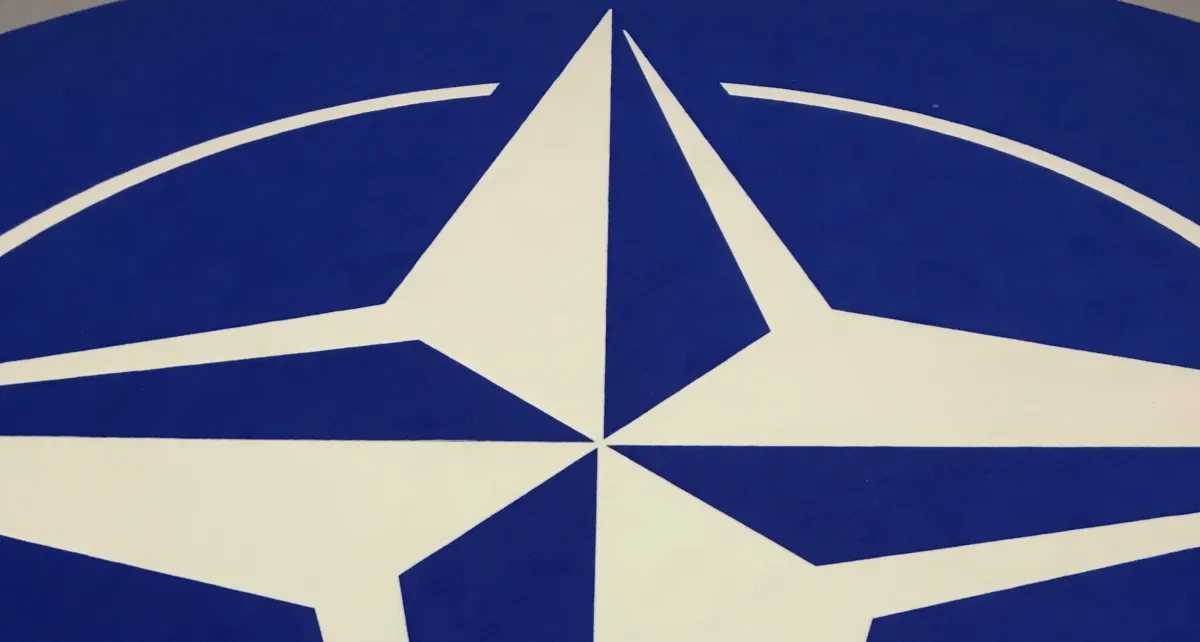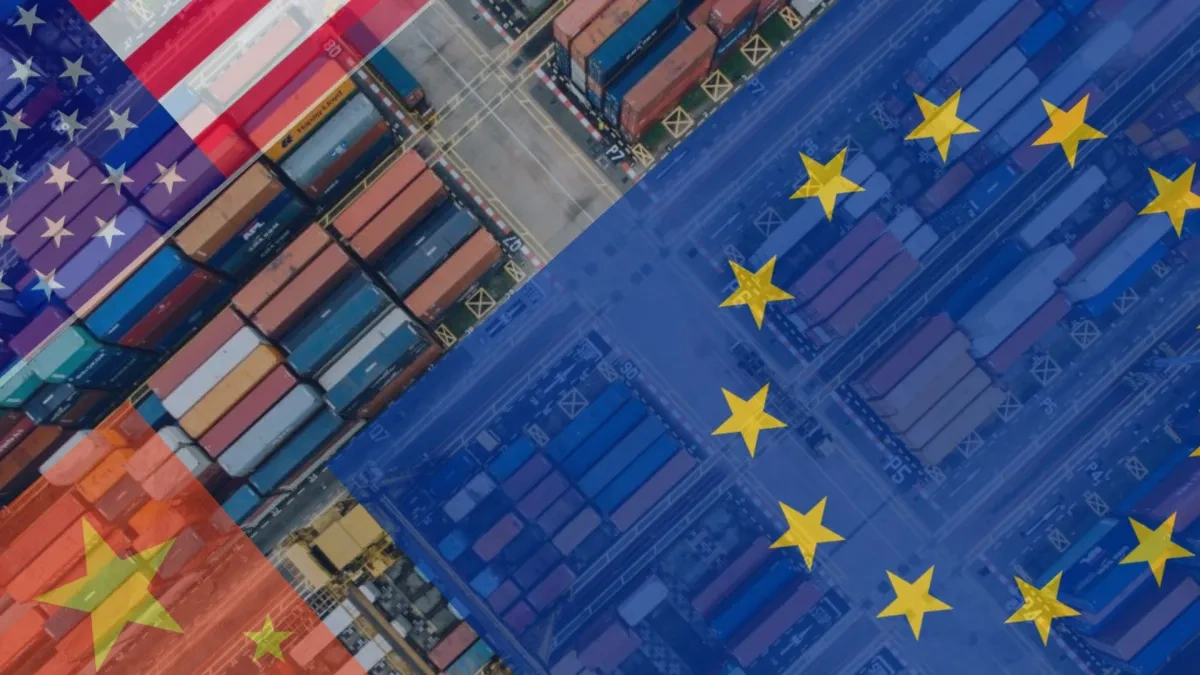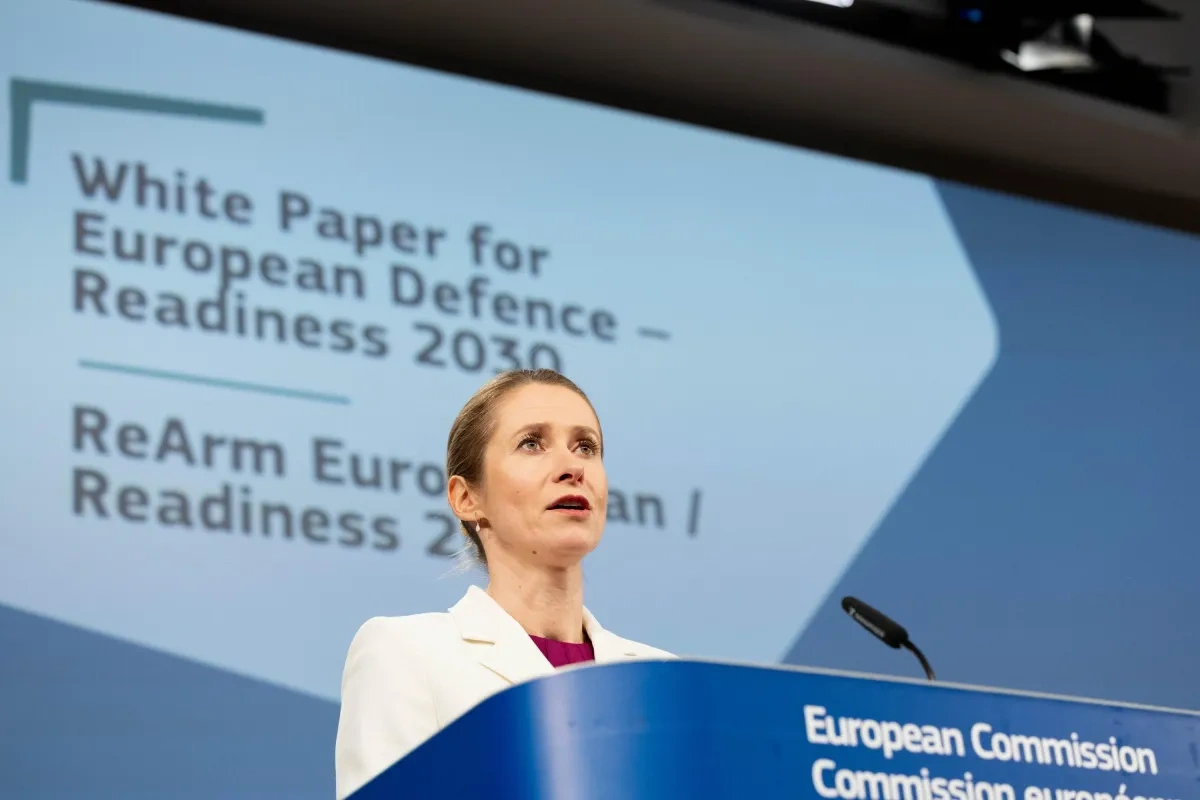
Federica Fazio (Dublin City University)
As Brussels turned blue to celebrate NATO’s 76th anniversary last Friday, the atmosphere in the Belgian capital could not have been further from last year’s celebratory mood. Two days earlier, on what the President of the United States (POTUS), Donald J. Trump, dubbed “Liberation Day”, he had announced a series of “reciprocal tariffs” on imports from countries that allegedly impose high tariffs on US goods, alongside a blanket 10% tariff applied to all nations, including Ukraine but interestingly not Russia. The reciprocal tariffs include a 20% duty on imports from EU member states, 23 of which are also NATO members. A separate 25% tariff was imposed on Canada, a NATO founding member and key ally, citing concerns over alleged illegal immigration and the flow of illicit drugs like fentanyl across the northern border. Espen Barth Eide, the Foreign Minister of Norway, also a NATO founding member and crucial ally, has voiced concern that these tariffs may violate Article 2 of the North Atlantic Treaty, which states that allies “will seek to eliminate conflict in their international economic policies and will encourage economic collaboration between any or all of them”.
This announcement comes on top of the US administration’s expansionist pressures on Canada and Greenland, which is part of Denmark, also a NATO founding member and an EU member state. A week after unequivocally stating in a joint address to Congress “One way or the other, we’re going to get it (Greenland)”, Trump reiterated the message while sitting next to NATO Secretary General (SG) Mark Rutte in the Oval Office. Asked about a possible annexation of Greenland, Trump said “Well, I think it’ll happen”, and added “we have a couple of bases on Greenland already, and we have quite a few soldiers that — maybe you’ll see more and more soldiers go there. I don’t know.” The reference was to the US Pituffik base, where a US delegation led by Vice President (VP) JD Vance was sent to the following week, uninvited. During the visit, Vance harshly criticised the Danish government for not “devoting the resources necessary to keep this base, to keep our troops, and, in my view, to keep the people of Greenland safe from a lot of very aggressive incursions from Russia, from China, and from other nations”.
These claims have rightly sparked outrage and incredulity in Copenhagen. During an emergency visit to the Arctic island last week, Danish Prime Minister Mette Frederiksen addressed POTUS from the HDMS Vædderen, an ocean patrol frigate of the Royal Danish Navy, delivering a strong and moving speech that reflected a sense of frustration and disappointment widely shared across all flanks of the Alliance. “When you demand to take over a part of the Kingdom of Denmark’s territory, when we are met by pressure and by threats from our closest ally, what are we to believe in about the country that we have admired for so many years? The country that, if any, have stood up for others’ freedom…You cannot annex another country, not even with an argument about international security”, she stated. A couple of days earlier, the members of the Nordic Council, all of whom are in NATO, had adopted a statement in support of Greenland and Denmark, stressing that their openness to closer cooperation with the US is contingent on respect for national sovereignty, territorial integrity, and democratic principles. The message is clear: an attack on one is an attack on all.
In addition to bullying Nordic allies, NBC recently reported that the Trump administration is also considering giving up the position of Supreme Allied Commander Europe (SACEUR), the top military role in NATO, as US Army General Christopher C. Cavoli, who currently holds the post, nears the end of his mandate this summer. Appointed by POTUS for a three-year term and confirmed by the consensus-based North Atlantic Council (NAC), the post of SACEUR has been held exclusively by senior American military officials since General Dwight D. Eisenhower became the first in 1950. The plan is part of Secretary of Defence (SoD) Pete Hegseth’s proposed Pentagon budget cuts and restructuring of the US military’s combatant commands and headquarters. This includes consolidating commands, such as the US European Command (USEUCOM), which Cavoli currently leads in his dual-hatted role as SACEUR and USEUCOM Commander, and the US Africa Command (USAFRICOM), into a single command based in Germany. Additionally, it may involve eliminating a Joint Staff directorate that oversees development, training and education for the joint force, and halting the expansion of US Forces Japan.
These reports have sparked controversy in Washington, even within the Republican Party itself. In a joint statement, the Chairmen of House and Senate Armed Services Committees, US Representative Mike Rogers (R-AL) and Senator Roger Wicker (R-MS), stated that they “we will not accept significant changes to our warfighting structure that are made without a rigorous interagency process, coordination with combatant commanders and the Joint Staff, and collaboration with Congress. Such moves risk undermining American deterrence around the globe…”. During the final testimony of Gen Cavoli and Marine Corps Gen Michael E. Langley, the USAFRICOM Commander, on the posture of both commands before the Senate Committee on Armed Services (SASC) last Thursday, Senator Wicker went even further, adding “We must maintain a strong military posture in Europe overall. Failing to do so risks tainting Russian adventurism before our European allies have been able to ramp up their forces fully and their capabilities.”
Gen Cavoli seems to be of the same advice, as he concluded his opening statement saying “Through U.S. leadership, we are laying the groundwork for European leadership and, thus, for more years of peace and prosperity for the United States of America”.
As Commander of USEUCOM, Gen Cavoli explained in his statement prepared for SASC how USEUCOM contributes to ensuring US strength, safety, and prosperity by defending the homeland forward, projecting American combat power globally, and deterring Russian aggression, which he described as a “chronic and…growing threat” to NATO. In addition, through the Security Assistance Group – Ukraine (SAG-U), since the Ukrainian war started, USEUCOM has delivered critical ammunitions, arms and equipment for a total of $65.9 billion (around €60.6 billion) to Ukraine. Since last December, however, much of SAG-U’s tasks have been taken over by the NATO Security Assistance and Training for Ukraine (NSATU), following its announcement at the NATO Washington Summit.
In his capacity as SACEUR, today Gen Cavoli is responsible for all NATO military operations, encompassing both Article 5 and non-Article 5 operations, and forces, including nuclear forces, and oversees the NATO Force Structure. As he explained in the above-mentioned statement, since war broke out in Ukraine, Allies have entrusted certain operational decisions and military authorities that were previously subject to approval in the NAC to SACEUR for more efficient and rapid decision-making. The swift deployment and execution of Baltic Sentry, a NATO-led mission aimed at safeguarding critical undersea infrastructure in the Baltic Sea, is a clear example of how these enhanced authorities have facilitated rapid action. In response to the war, upon his appointment in the summer 2022, Cavoli has also led the transformation of the Supreme Headquarters Allied Powers Europe (SHAPE), located in Mons, Belgium, from a strategic into a warfighting command fit for purpose. These changes underscore the Alliance's resolve to reorient itself around its traditional collective defence mission.
Asked about the potential effects of eliminating this second hat of responsibility, Cavoli stated that it would create challenges in terms of command and control, including for nuclear forces. “It would put us in a position where, in an Article 5 situation, we could have, for the first time since the First World War, large numbers of American troops under non-US command” he stated, adding “We would want those (nuclear weapons) under the command of a US officer.” As he explained to US lawmakers, as the American Commander in Europe, US nuclear weapons are currently in his possession, and at the time of need, he would pass them to himself as SACEUR to employ in accordance with the Alliance’s 32 nations. The Alliance currently relies on US extended nuclear deterrence; however, growing concerns about Washington’s uncertain commitment to Article 5, the mutual defence clause, have sparked debates on whether France and the United Kingdom could offer a viable replacement.
Relinquishing the role of SACEUR, as former SACEUR, Retired Navy Admiral James Stavridis, has pointed out, would result in a significant loss of American influence in NATO, representing a potential first step toward leaving the Alliance.
As Gen Cavoli was testifying on Capitol Hill, on the other side of the Atlantic, NATO SG Mark Rutte was welcoming US Secretary of State (SoS) Marco Rubio to NATO Headquarters for his first NATO Ministerial meeting. During a joint press conference, SoS Rubio reassured allies that “the US is as active in NATO as it has ever been” and stated that “President Trump has made clear he supports NATO; we’re going to remain in NATO”, “but”, he continued, “we want NATO to be stronger, we want NATO to be more viable; and the only way for NATO to be stronger and more viable is if our partners, the nation states that comprise this important alliance, have more capability.”
However, President Trump has never unequivocally expressed support for NATO. On the contrary, he has repeatedly questioned whether the United States should uphold Article 5 for allies that do not meet the 2% GDP target. In addition, both he and his administration have consistently shown a lack of respect for NATO, for its European allies and Canada, and for Ukraine. This sentiment was evident in the speeches delivered by SoD Hegseth and VP Vance at the Munich Security Conference in February, as well as during a press conference held in the Oval Office on the occasion of Ukrainian President Volodymyr Zelensky’s visit to Washington, marking the third anniversary of the start of the war. There President Trump and VP Vance publicly accused President Volodymyr Zelensky of lacking gratitude for American support and pressured him to agree to both a peace deal with Russia and a proposed mineral resources agreement that would give the US significant access to Ukraine’s mineral resources, including rare-earth elements, oil, and gas.
Rubio, who notably remained silent while Trump and Vance cornered Zelenskyy at the end of February, also spoke of “fulfilling a promise to reach up to 5% of spending”. It is unclear whether this is the new defence investment pledge that will be formalised at the NATO Summit in The Hague this June. One thing is certain: these new tariffs will do nothing to promote fair trade or help NATO allies meet their defence spending commitments.
The war in Ukraine may be reshaping the liberal world order, but despite what SG Rutte called “the biggest increase in defence spending here on the European side of NATO since the end of the Cold War” and ongoing modernisation efforts designed to resource the 3 regional plans agreed at the Vilnius Summit in 2023, the Alliance may be in worse SHAPE today than it was a year ago.

Federica Fazio is a PhD Candidate in the School of Law and Government at Dublin City University. Her research interests lie at the intersection of international law and international relations, with a substantive focus on transatlantic security and defense and EU-NATO relations.



